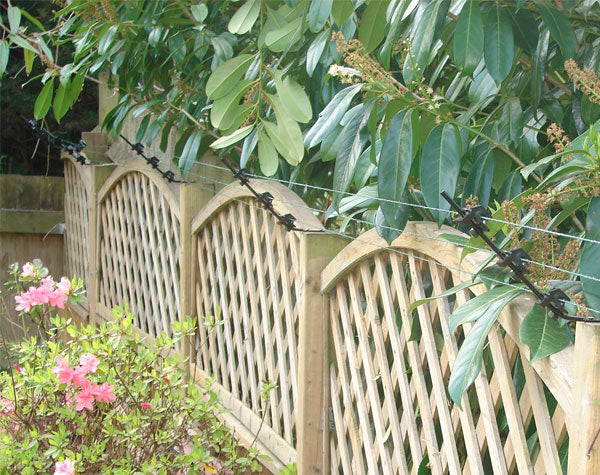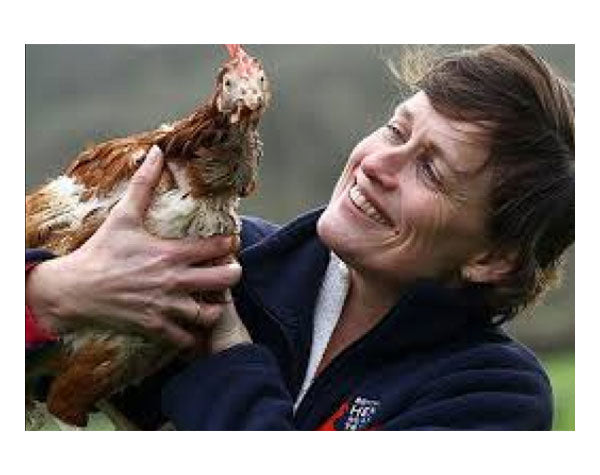A Beginner's Guide to Electric Fencing
An electric fence will either keep animals in or predators out and is both a very effective and economical way of performing either function.
Electric Netting is best used for poultry, rabbits, goats and often sheep. Netting is a very flexible method of setting up a temporary pen which will enable you to move the fence frequently if required.
You can use electro-tape for horses (they can see it more easily) and polywires for smaller animals such as sheep and goats. Strong galvanised wire is usually used for cattle and pigs and for longer, permanent fencing.
For temporary fencing, Plastic Tread-in Posts are a popular choice for supporting either tape or polywire. For permanent wooden posts, there is a wide selection of insulators to carry tape, polywire or galvanised wire.
You will need an Energiser to convert power from either a battery or the mains to energise your fence. The type of Energiser you will need is dependent both on the length of your fence and whether you will be drawing power from a battery, solar or the mains supply.
Briefly, to set up:- Put your fence posts and wire in place, install your energiser next to a mains outlet, or with a battery near the fence. Push the earth stake into the ground near the energiser. Clip the energisers' red clip to a wire of the fence and the green earth clip to the earth stake. Turn energiser on.
What do I need to make an Electric Fence?
An Electric Fence is a circuit where an electrical current (at one pulse per second) passes through the fence wire. When the animal touches the fence it completes the electrical circuit.
The electric pulse travels through the animal (it won't harm them, it's just a large static shock to scare them) to the ground it is standing on. The energy goes through the ground back to the earth stake and then back to the energiser unit.
The fence can be in one long straight line and it will still work, as it is the animal that makes the completed circuit.
All electric fencing systems need the following:-
- An Energiser (battery, solar powered or mains powered) to provide the current to the fence. The Energiser is often called a 'Fencer'. The type of Energiser you will need is dependent on the length and type of fencing you plan to use and the type of animals you intend to keep in or keep out.
- Either: A roll of Electric Netting
Or: Rolls of electro-tape, electro-rope or polywire in sufficient quantity to make up from one to six strands of fence depending on the animal. - An Earth Stake - some energisers have them built in - but without one your fence will not work.
- For Electric Netting: No other posts or insulators are needed, the posts are already in the netting and it comes with some pegs and a warning sign. However, for tricky ground, there are extra posts available.
- For electro-tape, electro-rope or polywire: Insulators to screw into timber/metal posts and there are a large variety of these available, or, use Plastic Tread-in Posts which have 'wire carriers' on them and these come in different heights and 'sturdiness' too. If using several strands of tape/wire then connectors are also necessary to connect all strands together and ensure the pulse transfers through each line, or, the wire can be 'woven' in a zig-zag way through the insulators or posts.
- For Mains Energisers: Some insulated HT cable (often called lead-out cable), and crocodile clips or clamps, connect the Energiser to the fence and also to the Earth Stake.
- For Battery Energisers: A battery, either 12v, 9v or 6v (we can no longer supply 12v or 9v batteries) appropriate to that energiser. Some low voltage energisers use normal 'D' size batteries available in any supermarket.
These are the requirements for any basic system. There are also many other 'bits and bobs' you can add e.g. gates, reels etc. to get the final system you want. If you need advice please do call us on 01300 345229.
- - - -
How Electric Fencing Works ©Flyte so Fancy 2009. Author: Anne Weymouth. Reproduction of part or all of this text is only possible with the express permission of Flyte so Fancy Ltd.


